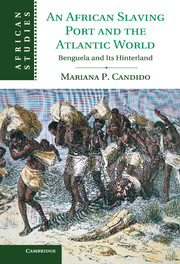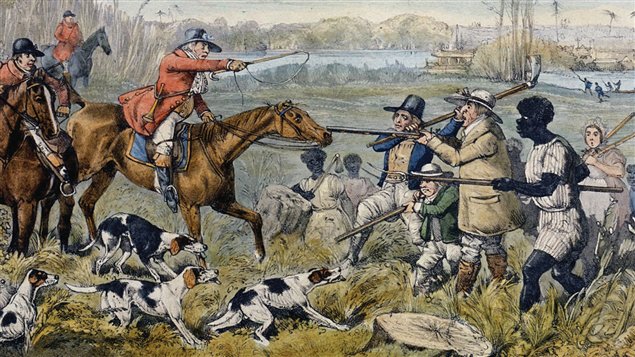
Benguela [Angola] in the Transatlantic Slave Trade
A 27-year civil war ruined Angola's transport infrastructure
Once a major slave-trading port linking Africa to Brazil, in the 20th Century Benguela became the terminus for the Benguela railway.
In its heyday the railway stretched 1,370km from the nearby port town Lobito to Luau on the border with the Democratic Republic of Congo. (source: BBC)

An African Slaving Port and the Atlantic World: Benguela and its Hinterland, by Mariana Candido
From the University of Chicago International Studies, "Rethinking How Slavery Changed Africa," by Claire Withycombe, on 5 December 2012 -- African Studies Distinguished Lecturer Mariana Candido says the transatlantic slave trade is more important in the history of West Africa than previously thought.
In the coastal city of Benguela, Angola, a stack of concrete triangles is oriented upright, so that the edge of the largest pierces the sky, a stiff geometric contrast to an infinite blue expanse. The assemblage forms a monument to the 1617 arrival of the founder of the Portuguese colony of Benguela, Manuel Ceveira Pereira. Today, it is the only deliberate reminder of the city’s colonial past.

A photograph of the monument figured prominently in Princeton University history professor Mariana Candido’s presentation on the role of Benguela in the transatlantic network, which sought to re-evaluate the popular assertion that the region’s colonial and slave trading past was peripheral to developments in the Atlantic world.
Candido was invited to the University to deliver the first African Studies Distinguished Lecture on November 27th, sponsored by the Committee on African Studies and the Center for International Studies. Her lecture was titled, "Reevaluating the 'Marginal Institution': The Role of Benguela, Angola in the Transatlantic Slave Trade."
In Candido’s view, the Pereira monument denotes a critical gap in the historiography of West Central Africa. “The history of slavery is central to understanding the history of this region,” she said.

While past scholars and contemporary colleagues have emphasized continuity and stability in the period extending from the seventeenth to the nineteenth centuries, Candido argued that documents from Benguela demonstrate that the slave trade undeniably and irreversibly changed many dimensions of life in West Central Africa.
Candido explained that because of the “pressures of the Atlantic economy...people migrated from the coast into the interior.” The growing commerce in slaves “shifted the trade roots, affected agricultural production and the local diet, and favored the spread of slave routes, as well as led to the collapse of old states and emergence of new ones,” she said.
Documentation that Candido unearthed regarding slaves in the U.S., Brazil, and elsewhere further connects the city to developments beyond its shores, she said, and demonstrates the “importance of incorporating research on the African diaspora to understand changes that took place in the African continent before the twentieth century.”
Okay, this photo has NOTHING to do with the subject, but I found it to be a very humorous image from Benguela, Angola. (source: MARIÁ F. MARTINS - PRONTO PARA FAZER UM CABRITE EM BENGUELA - ANGOLA)
Portuguese colonizers introduced a variety of important transformative measures, including creation of colonial bureaucracy, religious conversions, and the forced signage of vassalage treaties which required African rulers to accept “a series of obligations such as payment of tribute and adoption of Christianity,” Candido said.
In a question-and-answer session that followed the lecture, Candido addressed audience members’s questions about gender relations during the colonial period, the significance of road construction under colonial rule, and the broader theological justification of Portuguese colonization. (source: University of Chicago International Studies)




+2012+Kit+Lang.jpg)






